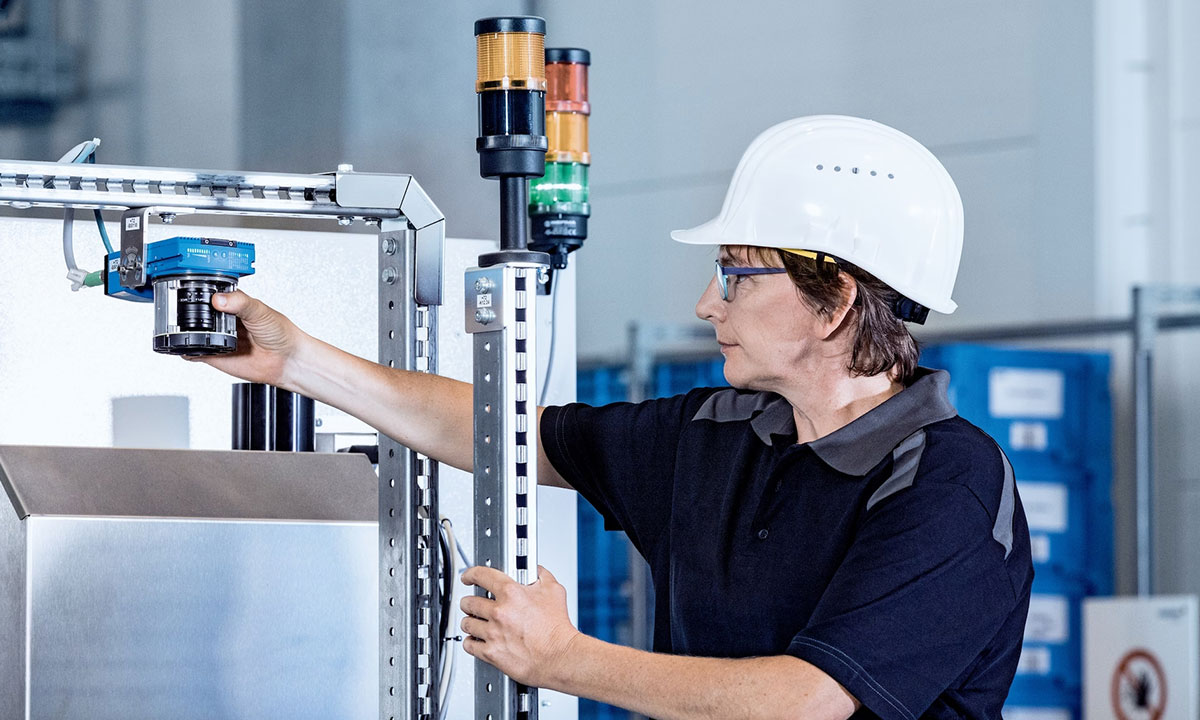Smart factories, also known as the factory of the future or Industry 4.0, represent a significant leap forward in the realm of manufacturing. These advanced facilities leverage cutting-edge technologies such as the Internet of Things (IoT), artificial intelligence, robotics, and big data analytics to optimize the manufacturing process, improve efficiency, and reduce costs.
Introduction: Understanding the Concept of Smart Factories
At their core, smart factories are characterized by interconnected machinery and systems that can communicate with each other, collect and analyze vast amounts of data, and make autonomous decisions. This interconnectedness enables a high degree of flexibility, allowing smart factories to adapt to changes in production demands in real time, and even customize products to individual customer requirements.
One of the key pillars of smart factories is predictive maintenance, where sensors and data analytics are employed to predict equipment failures before they occur, thus minimizing downtime and preventing costly disruptions to the production line. This proactive approach to maintenance ensures that machines operate at peak efficiency, extending their lifespan and reducing overall maintenance costs.
Furthermore, the implementation of smart factories enables manufacturers to achieve higher levels of sustainability by optimizing energy consumption, reducing waste, and minimizing the environmental impact of their operations. By embracing the concept of smart factories, manufacturers can enhance their competitiveness in the global market while contributing to a more sustainable industrial landscape.
Benefits of Smart Factories in the Manufacturing Industry
Manufacturing industries across the globe are constantly evolving, striving for increased efficiency, productivity, and competitiveness. At the forefront of this transformation is the concept of the smart factory. A smart factory integrates cutting-edge technologies such as the Internet of Things (IoT), Artificial Intelligence (AI), and advanced data analytics to create a seamlessly connected environment that self-optimizes performance across a network of interconnected and web-enabled machinery. SIENERJI stands as an integral player in equipping manufacturers with the tools needed to make this shift towards a smarter production paradigm.
The benefits of transitioning to a smart factory model are manifold, profoundly impacting the way manufacturers operate and deliver value. One primary advantage is the substantial increase in operational efficiency. By automating tasks and enabling real-time data monitoring, smart factories can significantly reduce production downtime, improve process speeds, and minimize waste. This is not merely about replacing the human element; it's an enhancement that allows workers to focus on more strategic, creative tasks that drive innovation and growth.
Another significant benefit is predictive maintenance. Traditionally, maintenance was reactive or scheduled at regular intervals regardless of actual need, which could lead to either unexpected failures or unnecessary downtime. Smart factory technology enables the monitoring of equipment health in real time, predicting when maintenance is truly required. This minimizes interruptions, extending the lifespan of machinery and reducing the costs associated with breakdowns and repairs.
Enhanced quality control is also inherent in smart factory systems. Advanced sensors and AI-driven analysis can detect and address variances in product quality immediately, ensuring that problems are corrected quickly and efficiently. This means the consistency and reliability of products are improved, which enhances customer satisfaction and reinforces brand reputation. For companies like SIENERJI, whose clientele value precision and dependability, the gains in quality management cannot be overstated.
Flexibility and scalability are additional perks of the smart factory environment. The traditional manufacturing setup is often rigid, making adaptation to new processes or changes in product designs challenging. In contrast, smart factories provide a modular framework that can be quickly reconfigured to meet changing demands and market conditions. This agility allows manufacturers to stay relevant and respond to trends and customer needs with unprecedented speed.
Data analytics and enhanced decision-making capabilities further underline the benefits of a smart factory. With sensors collecting vast amounts of data and machine learning algorithms interpreting this information, manufacturers gain insights that were previously inaccessible. Armed with this knowledge, decision-makers can optimize production floors, manage supply chains more effectively, and even predict market changes. The power of data-driven decision-making empowers manufacturers to undertake proactive steps in improving operations and exploring new business opportunities.
Ultimately, the incorporation of smart factory technologies signifies a giant leap forward in manufacturing efficiency, quality, and adaptability. It translates to better resource management, cost savings, and improved outcome predictability—elements that are key to survival in today's fast-paced, innovation-driven industrial landscape. SIENERJI remains committed to delivering the essential components that make this revolution possible, fostering an environment where smart factories are not just a concept, but a concrete reality for industrial professionals, engineers, and maintenance teams worldwide.
Key Technologies Driving the Smart Factory Revolution
As the manufacturing industry continues to evolve, smart factory technologies are revolutionizing the way industrial operations are carried out. These advanced technologies are driving unprecedented levels of efficiency, productivity, and flexibility, ultimately transforming traditional manufacturing processes. Let's delve into the key technologies that are spearheading this paradigm shift.
Internet of Things (IoT) and Sensor Technology
The integration of IoT and sensor technology has been a game-changer for smart factories. By connecting machinery, equipment, and devices to the internet, manufacturers can gather real-time data on performance, energy consumption, and potential maintenance needs. This data allows for predictive maintenance, minimizing downtime, and optimizing overall equipment effectiveness. Furthermore, sensors facilitate the monitoring of environmental conditions, ensuring optimal operational parameters and enhancing workplace safety.
Big Data and Analytics
Big data and analytics play a crucial role in smart manufacturing by enabling data-driven decision-making. The vast amount of data generated by IoT devices and sensors is analyzed to derive actionable insights, identify patterns, and forecast potential issues. This data-driven approach optimizes production processes, inventory management, and supply chain operations. It also empowers manufacturers to continuously improve their operations, enhance product quality, and respond swiftly to changing market demands.
Artificial Intelligence (AI) and Machine Learning
AI and machine learning technologies are pivotal in automating and optimizing manufacturing processes. These technologies empower smart factories to implement autonomous systems that can make real-time adjustments based on complex algorithms and data analysis. AI-driven predictive maintenance can preemptively identify equipment failures, reducing unplanned downtime and maintenance costs. Additionally, machine learning algorithms can optimize production schedules, quality control, and resource utilization, fostering efficient and agile manufacturing operations.
Cyber-Physical Systems and Robotics
Cyber-physical systems and robotics are reshaping the factory floor by creating interconnected systems that blend the physical and digital realms. This integration facilitates the deployment of collaborative robots, or cobots, that can work alongside human operators safely and efficiently. Furthermore, the adoption of autonomous guided vehicles (AGVs) streamlines material handling and logistics, promoting a seamless and responsive production environment. These innovations not only enhance operational efficiency but also contribute to a safer and more ergonomic workplace.
Cloud Computing and Edge Computing
Cloud computing and edge computing are instrumental in enabling seamless connectivity and data sharing across the smart factory ecosystem. Cloud platforms provide centralized data storage, processing, and analysis, facilitating remote access and collaboration. Meanwhile, edge computing brings computation and data storage closer to the production processes, enabling real-time data processing and reducing latency. The combination of cloud and edge computing enhances scalability, resilience, and responsiveness, laying the foundation for agile and adaptive manufacturing operations.
Conclusion
The convergence of these key technologies is propelling the smart factory revolution, driving the industry towards unparalleled levels of efficiency, agility, and innovation. Embracing these technologies not only optimizes manufacturing processes but also fosters a responsive and adaptable manufacturing ecosystem, ensuring competitiveness in the dynamic global market.
Implementing Smart Factory Solutions: Challenges and Considerations
In the pursuit of innovation and efficiency, the adoption of smart factory solutions is becoming increasingly widespread within the industrial sector. As manufacturing environments evolve into intelligent, interconnected workspaces, companies like SIENERJI are at the forefront, guiding organizations through this transformative journey. However, the path to fully realizing a smart factory is riddled with complexities that necessitate thoughtful planning and strategic foresight.
One of the primary challenges lies in the integration of new technologies with existing systems. Many factories are equipped with legacy machinery that is critical to production but may not be inherently compatible with state-of-the art smart technologies. This presents a dilemma: to either retrofit older equipment with sensors and connectivity features or invest in new, smart-ready machines. Retrofitting can be cost-effective and minimizes waste but might not yield the full spectrum of smart capabilities. Conversely, new machinery entails higher upfront investment but could offer superior data analytics and automation features.
into actionable insights. This involves implementing scalable storage solutions capable of handling large volumes of data in real-time. Additionally, sophisticated data processing algorithms are necessary to extract meaningful patterns and trends from diverse data sources. Integration with machine learning models further enhances predictive capabilities, enabling proactive maintenance and optimization of production processes. Effective data management not only improves operational efficiency but also supports strategic decision-making for long-term business success.

























